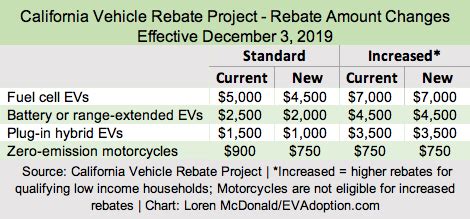In recent years, California has emerged as a leader in environmental initiatives, particularly in the realm of sustainable transportation. As climate change issues intensify, the state continues to pioneer innovative strategies to reduce greenhouse gas emissions and promote clean energy solutions. One of the most significant efforts aimed at transforming the automotive industry in California is the Clean Vehicle Rebate Program (CVRP). This article delves into the history and current status of the CVRP, its goals, and the anticipated changes by 2025.
Background of the Clean Vehicle Rebate Program
The Clean Vehicle Rebate Program was first introduced in 2010, with the aim of encouraging Californians to purchase electric and hybrid vehicles. The CVRP provides financial incentives for both individuals and businesses who choose to buy or lease clean vehicles. This subsidy helps lower the total cost of ownership, making electric vehicles (EVs) and plug-in hybrids more accessible to a broader audience.
California’s commitment to reducing air pollution and greenhouse gas emissions stems from its aggressive climate goals and regulations. The state has set ambitious benchmarks to achieve carbon neutrality by 2045, and transitioning to clean vehicles is a key element of this strategy.
Current Status of the Program in 2023
As of 2023, the CVRP has successfully issued rebates for over 500,000 clean vehicles, contributing significantly to the state’s overall fleet of low-emission vehicles. The program has played a crucial role in raising public awareness about the benefits of electric and hybrid options.
In 2023, the incentive amounts vary based on the type of vehicle, battery size, and the buyer’s income level. Generally, eligible applicants can receive between $2,500 to $7,000, depending on these factors. This financial assistance is critical for many consumers who might otherwise overlook electric vehicle options due to their higher upfront costs compared to traditional gasoline-powered vehicles.
Looking Towards 2025: Proposed Changes and Enhancements
As California approaches 2025, the state plans to enhance the Clean Vehicle Rebate Program significantly. Various discussions and policy proposals are underway to improve the program’s structure, making it more effective and user-friendly for potential buyers.
Increased Incentive Amounts
One of the anticipated changes is an increase in rebate amounts. Although specific figures have not been finalized, proposals suggest enhancing incentives for low-income households and expanding the benefits for fleet purchases, where businesses can significantly decrease their carbon footprints.
Expansion of Eligible Vehicles
In 2025, the CVRP will likely expand to include a broader range of electric vehicles, including new models from emerging manufacturers, as well as offering incentives for used EVs. This shift is particularly important as the market diversifies, ensuring that more consumers can participate in the transition to clean transportation.
Enhanced Accessibility and Streamlining the Application Process
Reducing bureaucratic hurdles is essential for maximizing participation in the CVRP. Efforts are expected to focus on streamlining the application process, making it more efficient and less daunting for prospective buyers. Implementing an online portal for real-time application tracking could enhance user experience significantly.
Targeted Marketing Campaigns
Public education is key to shifting perceptions about electric vehicles. In 2025, state officials plan to invest in targeted marketing campaigns aimed at underrepresented communities. The goal is to inform these communities about the advantages of clean vehicle ownership and the benefits of the CVRP.
The Role of Infrastructure Development
As the CVRP evolves, so too does the need for robust charging infrastructure. In conjunction with the program, California is scaling up efforts to develop accessible charging stations across the state. By 2025, an extensive network of fast-charging stations is anticipated to be operational, alleviating concerns about “range anxiety” that many potential EV users face.
Conclusion
California’s Clean Vehicle Rebate Program represents a critical step in the state’s journey towards a greener future. With numerous enhancements planned for 2025, the CVRP aims to make electric vehicles more accessible and attractive to a wider audience, ultimately contributing to the reduction of greenhouse gas emissions and fostering a sustainable transportation system. As California continues to push boundaries in environmental policy, the success of the CVRP could serve as a model for other states and countries looking to transition to cleaner transportation solutions.
FAQs
1. What is the Clean Vehicle Rebate Program (CVRP)?
The CVRP is a California state program that provides financial rebates to individuals and businesses for purchasing or leasing electric and hybrid vehicles, aimed at reducing greenhouse gas emissions and promoting clean energy transportation.
2. How much can I receive from the CVRP?
Rebate amounts vary from $2,500 to $7,000 depending on the type of vehicle, battery size, and the buyer’s income level.
3. What types of vehicles are eligible for the rebate?
Eligible vehicles include electric cars, plug-in hybrid vehicles, and later this decade, possibly used EVs and models from new manufacturers.
4. How can I apply for the CVRP?
Applications can be submitted online through the CVRP portal. The application process is set to become more streamlined by 2025, making it easier for users.
5. How does the CVRP fit into California’s broader environmental goals?
The CVRP is part of California’s comprehensive strategy to achieve carbon neutrality by 2045, significantly reducing air pollution while promoting sustainable transportation solutions.
Download California Clean Vehicle Rebate 2025
